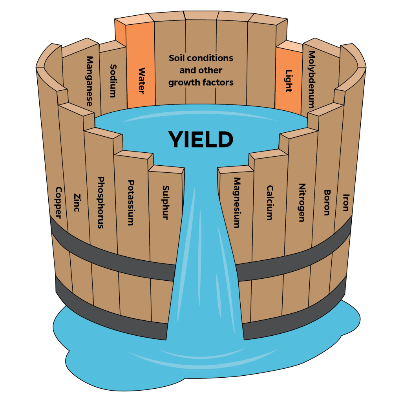Improving soil health is in vogue and many conferences have been held and stories written on soil health and how to achieve it. Of course, you can always monitor the upper rooting profile with a spade and see how dark, crumbly and aromatic the soil is.
Soil health is important, and it might just be the next factor you manage to increase yield. The Soil Health Institute (SHI) recently released Living Soil, a documentary about soil health. The film is available at www.livingsoilfilm.com. In their promotion of the film SHI writes:
“Our soils support 95 percent of all food production, and by 2060, they will be asked to give us as much food as we have consumed in the last 500 years. They filter our water. They are one of our most cost-effective reservoirs for sequestering carbon. They are our foundation for biodiversity. And they are vibrantly alive, teeming with 10,000 pounds of biological life in every acre. Yet in the last 150 years, we’ve lost half of the basic building block that makes soil productive. The societal and environmental costs of soil loss and degradation in the United States alone are now estimated to be as high as $85 billion every single year.”
Today the two most common strategies for improving soil health are adopting no-till and planting cover crops. Both contribute to improving soil health and sustainability, but that isn’t the whole story. There are products, soil amendments and rotations that play a role. In crop production increasing yield takes a system approach; the same goes for soil health.
I like the analogy of an engine when talking about soil health. The more fine-tuned an engine the greater the horsepower output. I believe soil is similar and by improving the quality (fine-tuning) and building the biological factory (supercharging), your soil can consume more organic matter, produce more nutrients and better support crop growth.
Liebig’s law of the minimum states that a crop’s yield will be determined by the most limiting factor. We see this illustrated as staves of a barrel with water leaking out. The shortest stave signifies the limiting factor such as nitrogen, zinc, etc. Of course, this could also be weather, population, weed competition, pest or disease stress, and even soil nutrient levels and health.

How do you know what the health of your soil is? Soil testing can help you determine if your pH is in the near neutral range and organic matter is 2.5% or greater. If the soil is also porous, crumbly and not compacted you have the right environment for good biological activity and soil health. But how active are the microbes?
Measuring the output of your soil’s engine can be done simply and quickly by measuring the soil respiration CO2 output—just like measuring engine horsepower with a dynamometer. The higher the respiration value the more crop-available nutrients are mineralized.
Your first step in evaluating soil health is monitoring soil indicators such as organic matter, pH, salinity (electroconductivity), bulk density, water infiltration, aggregate stability and nutrient availability. If fields are impeded physically or chemically, you can’t optimize biology.
Second, is monitoring the health of your soil because this is the engine that drives productivity. Run the soil health test, available at many commercial labs, and track soil respiration and nutrient mineralization. Remember, microbes actively feed on carbon and recycle nutrients to feed roots and humic compounds to improve the soil.
Third, is learning how to build a system that promotes soil health. Don’t settle for conventional soil testing and fertilizer strategies. Adopt tactics that optimize soil indicators, improve aeration, increase organic matter and enhance microbial activity. It’s the microbial activity that will take your soil and crop production to new levels.
So maybe it is time to start farming the soil. It’s time to start thinking of soil as the little engine that could. You must be positive, keep trying and trying to know you can do it.
Soybean agronomist Dr. Daniel Davidson posts blogs on topics related to soybean agronomy. Feel free to contact him at djdavidson@agwrite.com or ring him at 402-649-5919.




 and then
and then